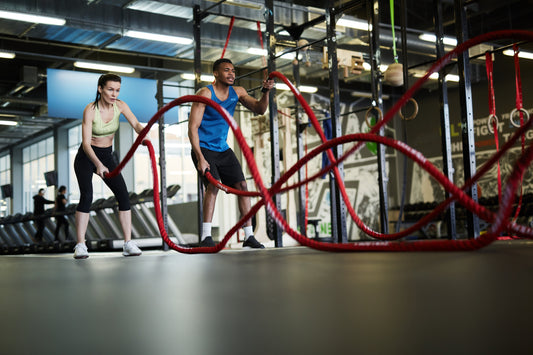Sleep
Perhaps the single most accessible and often underappreciated recovery tool in your toolkit…a good night’s sleep. Sleep is the single most fundamental foundation to our short- and long-term health span and lifespan and getting a good night's sleep is essential for your physical and mental health & wellbeing.
When you sleep, your body has a chance to rest and repair itself; and that’s your body AND mind. During sleep, your body will do its best work resynthesising muscle tissue and your brain gets to work consolidating memories, learning, and processing emotions too!
When looking at ways to optimise your sleep, keep in mind this fundamental ‘algorithm’ for effective sleep:
Quality – pay attention to your sleep hygiene to maximise the quality and efficiency of your sleep. Bright lights and caffeine too close to bedtime won’t necessarily stop you from getting to sleep, but they will significantly impair the quality of your sleep, which means that for the 8 hours you might be in bed for example, I bet you that a lot of that won’t be as restorative as you would like.
Quantity – it is generally recommended that adults aim to achieve 7-9 hours of sleep – note that it isn’t time in bed as these are two different things. So, depending on how efficient you are with your sleep, your actual bedtime need might be very different.
Regularity – maintaining a consistent sleep-wake cycle is another hallmark of sleep success as this plays directly into your circadian rhythm. But go easy on yourself and give yourself a little bit of leeway either side; perhaps 30 minutes each way.
Timing – wait, didn’t we go through this already?! Technically no, we haven’t. When we talk about timing, we’re talking about exactly when in a 24-hour cycle you hit the pillow and get those precious zzz’s. We all have our own unique chronotype when it comes to sleep. Some of us are early birds, others night owls and paying close attention to which one you are is an important step to getting efficient sleep.
Structured Training
It’s all about planning! The first step to setting yourself up for success is by giving yourself the time to train, and the time to rest. There is such thing as a law of diminishing returns when it comes to exercise. When you cross a certain point, you gain very little for the extra effort, and what you might find is that over time you will end up compromising your ability to recover effectively from any of the high-quality training that you do.
The same principle stands for the intensity of your training. If you are constantly training hard, your body and mind will not be able to recover effectively, and it becomes a vicious cycle of fatigue and increased risk of injury and or illness.
Understanding how much time you have available to train, is very different to aspiring to achieve an amount of training that someone else might be able to achieve or recommends to you for X improvement. Sometimes less is more as it can free up time to concentrate on other tools, which we will discuss right now.
Ice Baths & Saunas
Cold & Heat Exposure are all the rage right now. Hands up who has head of Wim Hof 🙋🏻♂️ but amongst all the hype, is there some science behind it? Simple answer, yes! But there are some caveats.
Ice baths have been used for almost 50 years, partly because of their ability to reduce muscle soreness and inflammation and improve many biomarkers for health and longevity. However, whilst the cold exposure can reduce inflammation, it may be counterintuitive to do so. Inflammation is an essential part of the adaptation process and so blunting this may limit the extent to which you adapt from your training.
If, however, you are in between multi day events and reducing muscle soreness is more important that adaptation, then 100% ice baths are a must. Studies also show that you only need 11 minutes per week of cold exposure to get all the benefits for your physical and mental health. Plus, it doesn’t need to be that cold either. Running your shower cold for a couple of minutes at the end each day is all you need to do, making it one of the most accessible and cost-effective tools after sleep.
Saunas as you might expect work by exposing you to heat instead of cold for a whole host of physiological benefits. From promoting heat acclimation and improving blood flow, saunas can help improve day to recovery from exercise, but also stimulate whole body adaptation to extremes of temperatures if that’s required.
The one big downside to saunas is of course the cost and accessibility in stark contrast to cold showers. If you are lucky enough to have access to a sauna, then that is great. If not, don’t worry, you can adequately heat acclimate (if you need to) by simply over layering for the activity you are doing. For example, if you are running on a treadmill indoors, instead of wearing a mesh T shirt, you could wear a jacket instead. But please do be careful and get supervision as training in the heat is extremely dangerous.






